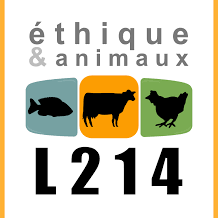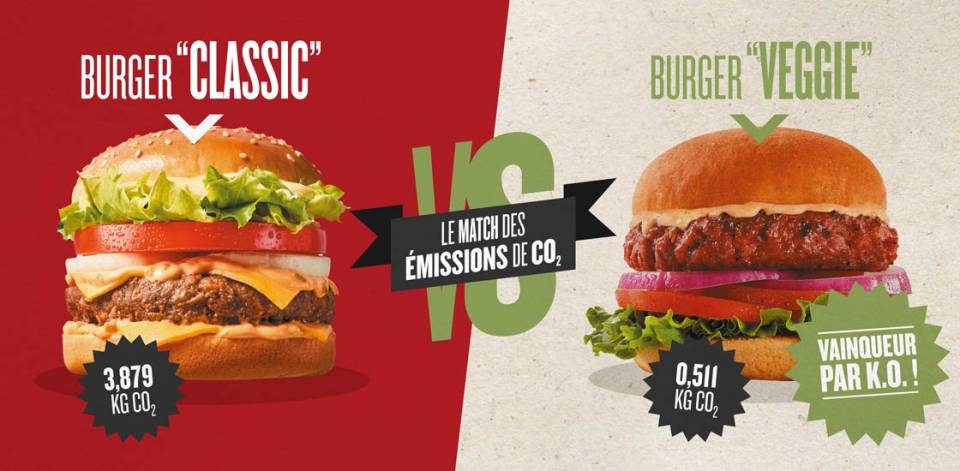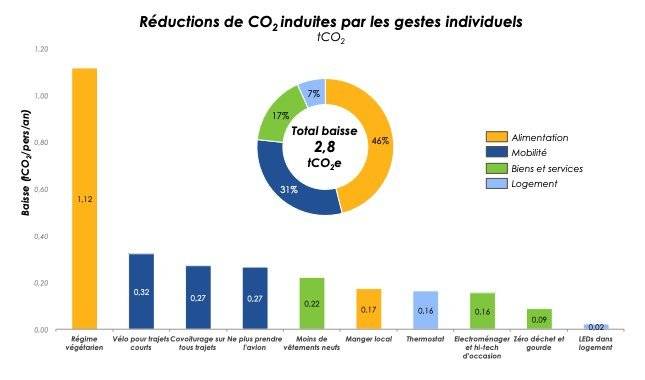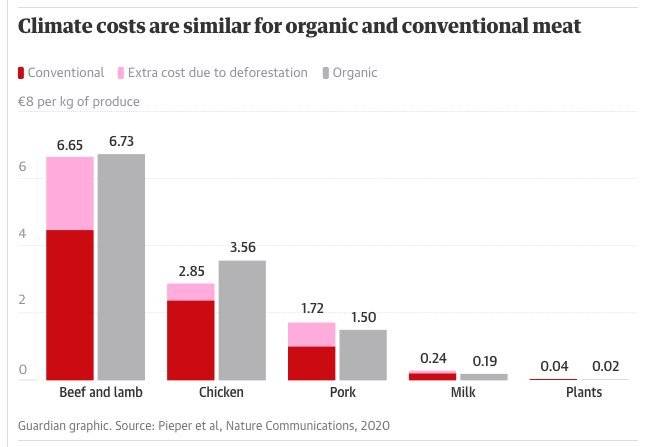

The new IPCC report draws up an edifying observation: the impacts of climate change are already there . They are faster, more frequent and hit harder than scientists expected. The inaction of politicians is already causing havoc, while solutions exist.
What is the link between animals and climate change?
Livestock, accelerator of climate change
According to the FAO, livestock is responsible for 16.5% of greenhouse gas (GHG) emissions worldwide. As much as the fuel consumption of all the trucks, cars, trains and planes on the planet combined! Livestock is also responsible for 65% of the destruction of the Amazon rainforest. GHG emissions from our food system could make it impossible to maintain the global average temperature at +1.5°C, even if we immediately stopped emissions linked to fossil fuels!
It is high time to react and review our diet. The most recent scientific expertise recommends a drastic reduction, of 50 to 90%, of our current consumption of products of animal origin ( see the studies ). Remember this figure: eating vegetables is on average 2.5 times less greenhouse gas than a Western omnivorous diet.

A note of hope? According to a February 2022 survey , two thirds of French women and men who eat meat or fish are ready to reduce their consumption of these foods. 64% would even support public policies aimed at reducing meat and fish consumption by up to 50% within 5 years. Civil society is ready to evolve!
Individual gestures have different effectiveness from each other
In the fight against climate change, eating organic and local is a frequently recommended eco-gesture... however, there is another much more effective gesture. Among the individual actions with the greatest impact, switching from a meat diet to a vegetarian diet is a lever 6 times more powerful!
A study of the carbon footprint of the French, conducted by the firm Carbone 4, quantified the real impact of individual gestures and collective measures, whether taken by companies or at the political level. According to this study, the vegetarian diet alone represents 40% of the total maximum reduction that can be induced by changes in individual behavior.

Eating vegetarian is 6 times more effective than eating local in reducing individual CO2 emissions. From Carbone 4, 2019. Doing one's part, power and responsibility of individuals
Local or not local? The impact of transporting food on its total footprint
Life cycle analysis (LCA) is the most advanced tool for global and multi-criteria assessment of environmental impacts. This standardized and internationally recognized method makes it possible to measure the quantifiable effects of products or services on the environment, including transport. Using these tools, ADEME has created a database of products available in France, called Agribalyse. We can retain the following points.
Transportation often has little influence on the total environmental footprint. For example, transport accounts for 18% of the footprint of bananas consumed in mainland France. It is obviously less for local foods: 0.6% for the footprint of a local beef rib steak. However, the environmental impact of bananas is only 1.87 kg CO2 eq/kg while that of a beef rib steak is 33.98 kg CO2 eq/kg .
Lentils, a good alternative to meat due to their high iron and protein content, have a much lower footprint, only 0.31 kg CO2 eq/kg . In terms of proteins produced, the difference is even more striking: 1.23 kg CO2 eq/kg of protein for the lentils against more than 174 kg CO2 eq/kg of protein for the beef rib steak.
Vegetable milks also have a much lower impact than their animal equivalent. Agribalyse tells us that soy milk has a footprint of 0.42 kg CO2 eq/kg and that of almond milk is 1.08 kg CO2 eq/kg . Cow's milk has a footprint of 1.49 kg CO2 eq/kg and goat's milk is close with 1.63 kg CO2 eq/kg .
We can therefore see that an animal product, even local, has a much greater environmental footprint than a plant product, even non-local. This is the case even with foods that are commonly transported by air. Pineapples, for example, have an impact of only 1.15 kg CO2 eq/kg .
The reasons for the positive impact of organic
The environmental footprints of "organic" consumers were compared with those of "conventional" consumers based on the results of the BioNutriNet study (Solagro, 2018), using three indicators: surface footprint, greenhouse gas footprint greenhouse (GHG) and the energy footprint.
Products from organic or conventional agriculture are quite similar from an environmental point of view. Studies even show that the “climate cost” of meat produced in organic farming is relatively identical to that of conventional production inducing deforestation! This is because animals can live longer and therefore need to be fed longer. They are also less constrained than in intensive systems and therefore expend more energy.
However, a reduction in the environmental footprint of “organic” consumers has been observed. Why ? It is easily explained: “organic” consumers eat more products of vegetable origin and especially less products of animal origin . This more vegetal diet acts strongly against global warming (GHG footprint) and helps to reduce the area needed for agriculture (area footprint).

Climate cost of conventional and organic animal production (estimated in euros per kg)
Animal products make up the bulk of our surface footprint and account for 89% of conventional consumer GHG emissions. The surface footprint is reduced by a quarter among “organic” consumers. GHG and energy footprints are reduced by a third compared to conventional consumers.
Combining solutions, eating organic, local, seasonal, is good. However, to be much more effective, a significant reduction in the consumption of meat and dairy products is essential.
Posted on 2022-03-11 09:52








Comments